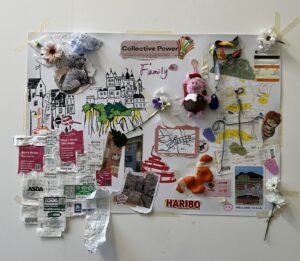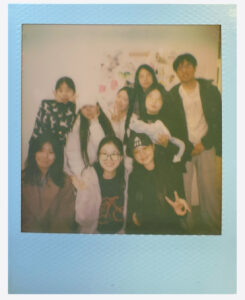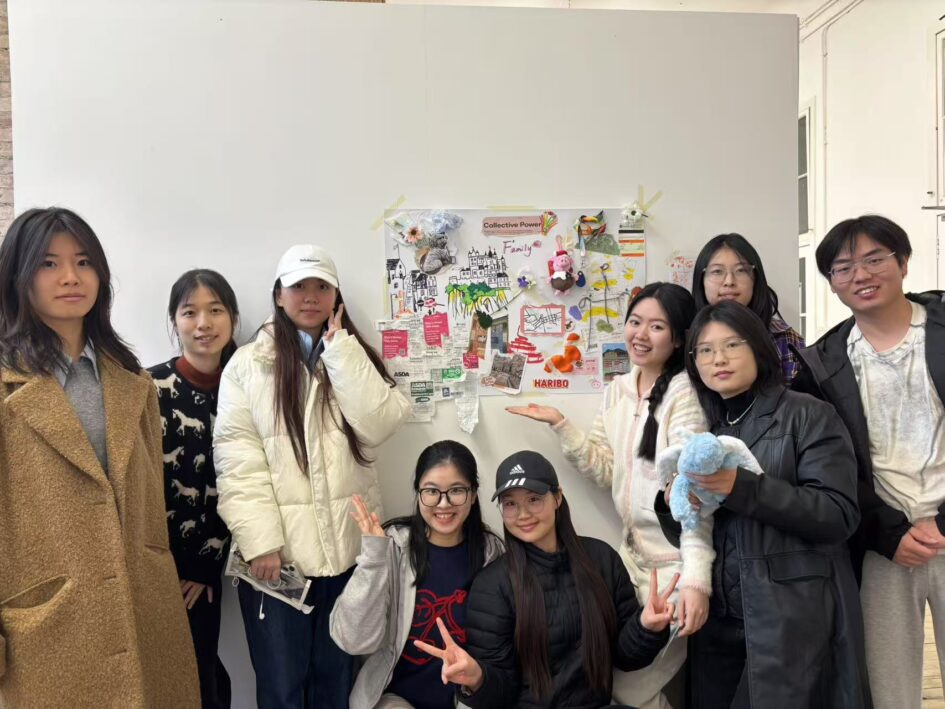This participatory workshop explored how urban memory is formed through personal, embodied experience rather than official archives. Drawing on Halbwachs’ (1992/2020) concept of collective memory, we see memory as a social process – constructed through interaction, shared space and narrative.
Participants shared personal narratives as co-creators, contributed objects related to memory, and collaborated to create collage works. This process activated what Bourriaud (2002) called relational aesthetics, where the production of meaning stems from participation rather than passive viewing. It also activated personal memories of place in the collective (Casey, 2000).
Process
1. Narrative sharing: Group members share personal stories related to Edinburgh.
2. Co-creation and collage: Participants use personal materials (e.g. ticket stubs, photos, handwritten notes) to create collective collages. This stage directly reflects Bourriaud’s (2002) proposition that art is a state of encounter – a relational space constructed by shared presence and action.
3. Dialogic presentation: Participants present their contributions, both as narrators and witnesses. Through mutual storytelling, a temporary micro-public group emerges, which echoes Claire Bishop’s (2012) emphasis on participation as a form of social critique rather than consensus building.


Curatorial Reflection
This workshop was based on participatory curating and relational aesthetics, both of which challenge traditional hierarchies between artists, curators and audiences. As Bishop (2012) argues, meaningful participatory art must not only allow for interaction, but also question how audience identity, authorship and power circulate in the project. Our curatorial role shifted from selecting and displaying to enabling, listening and adapting – creating the conditions for collective creation rather than dominating the results.
One of the most important insights in curating is the dissolution of fixed roles: participants become artists, curators, and narrators simultaneously. The function of the “collective space” is no longer limited to the gallery, but a platform—a socially engaged curatorial site where meaning emerges from situated dialogue and process. The aesthetic value of the project lies not in the final product but in the relational dynamics it facilitates.
⸻



Leave a Reply